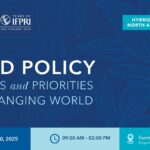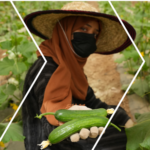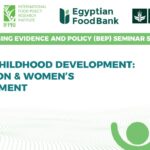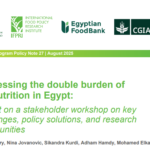Over the past half century, global food systems have undergone profound changes in response to significant environmental, economic and social shifts. The Middle East and North Africa (MENA) region is no exception, with rapid political, demographic and environmental changes taking place over the past 50 years. IFPRI’s mission is to provide research and evidence to guide policymakers in charting a course through these changes.
NEW PUBLICATION: Regional mapping of anticipatory action capacities in the Near East and North Africa agricultural sector
The Near East and North Africa (NENA) region faces a growing number of complex, overlapping and compounding hazards that are undermining livelihoods, deepening food insecurity and slowing economic development. Increasingly frequent and severe climate extremes – such as droughts, flash floods, heatwaves – are converging with transboundary plant and animal diseases, protracted conflicts and economic volatility. These risks disproportionately impact the agricultural sector, which remains a cornerstone of rural livelihoods and food systems in the region..
BEP Seminar Series | Early Childhood Development: Nutrition and women’s Employment
The labor force participation rate for women in Egypt fell to 18% in 2023.[1] Among the major factors theorized to contribute to this low rate is women’s time spent on care work. While women’s childcare work is undervalued in national GDP accounting, early childhood is a critical stage in human development that shapes the trajectory for individuals’ health, learning, and overall wellbeing throughout their lives. This seminar will bring together completed and emerging research on drivers of women’s employment and time use on the one hand with research and policy discussion regarding early childhood nutrition, nurseries, breastfeeding, and early childhood education.
NEW PUBLICATION: Addressing the double burden of malnutrition in Egypt
Key messages Parliamentarians, researchers, and development practitioners shared perspectives on the double burden of malnutrition in Egypt in roundtable discussions. Infrastructure gaps and policy and research strategy fragmentation are highlighted as challenges to accessibility of healthy food. Aggressive ads/media environment and inefficient nutrition education programs are regarded as negatively impacting consumer behavior. Economic factors are widely identified as a major driver of malnutrition. Recommended solutions include raising nutrition literacy, transitioning from food subsidies to vouchers, improving nutrition services infrastructure, taxing unhealthy foods, and fortifying staple foods. Participants called for continued dialogue between researchers and policymakers.
Policy Workshop Advancing Policy Innovation for Social Protection, Food, and Water in Egypt
The International Food Policy Research Institute (IFPRI) and the International Water Management Research Institute (IWMI) are convening a policy workshop that will gather government agencies engaged in shaping Egypt’s food, water and social protection policies.
- 1
- 2
- 3
- …
- 26
- Next Page »





